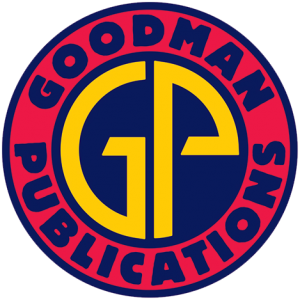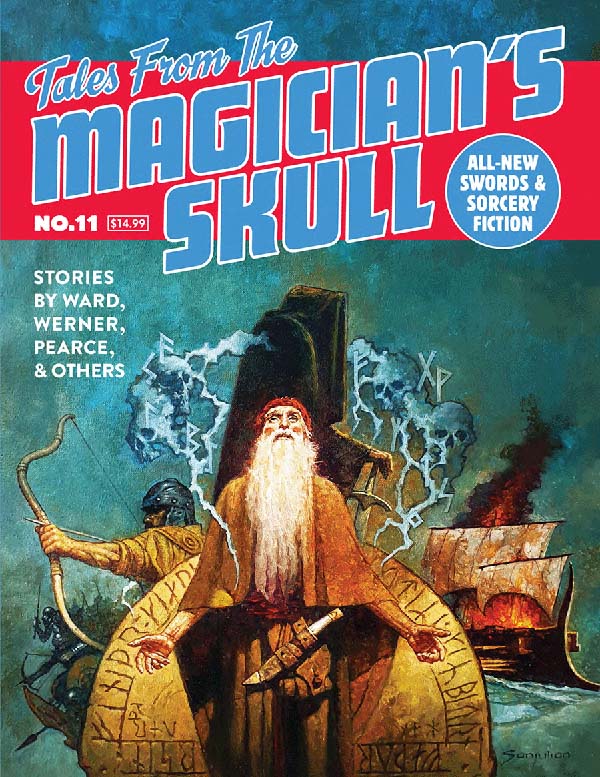William Hope Hodgson’s The House on the Borderland
by Bill Ward
“Presently, I saw, rising up out of the ruddy gloom, the distant peaks of the mighty amphitheatre of mountains, where, untold ages before, I had been shown my first glimpse of the terrors that underlie many things; and where, vast and silent, watched by a thousand mute gods, stands the replica of this house of mysteries — this house that I had seen swallowed up in that hell fire, ere the earth had kissed the sun, and vanished forever.”
These days, English author William Hope Hodgson is nearly always mentioned, if he is mentioned at all, as an early influence on H.P. Lovecraft. And that influence cannot be more apparent than in The House on the Borderland, a short, strange novel that is nothing less than a minor masterpiece of weird fiction. It was Hodgson’s second novel, published at age thirty, and over the next ten years he would publish further works of supernatural fiction, sea-adventures, and another major work of cosmic horror, The Night Land. In 1918 he died at the age of 40 — another life cut short by the Great War.
The House on the Borderland holds surprises for a modern audience, as it is at once written in the sort of style one would expect from a turn-of-the-century author, yet with a pace and frantic energy somewhat at odds with the prose. The book is ostensibly a manuscript found by a pair of friends on a fishing expedition in the wilds of Ireland in 1877, exactly the kind of framing device that is very common to fantastic fiction of this era. The manuscript, discovered at the edge of mysterious, fog-shrouded ruins, tells the story of a man known to us only as the Recluse, a man who lives far from civilization in an ancient house with only his sister and a dog for company.
This strange house, which the Recluse purchased very cheaply, and which affords him an opportunity for the solitude he craves, overlooks a great pit — itself a place of mystery. The Recluse explains to us that he has begun to keep a diary of the strange events that have plagued him since moving into the house.
All of which sounds like the setup for any other Gothic novel of the supernatural: sensitive loner in an ancient house in the wilderness writes of the weird things that visit him in the night. But here is where Hodgson innovates and does something new, something that would influence the literature of the fantastic that would come after him. It begins with a vision.
Inexplicably, the Recluse has a strange vision of a vast plain ringed by distant mountains, and he travels over this landscape as a disembodied entity. Around this arena loom monstrous pagan beast-gods and at the arena’s heart a house of green jade stands, in fact a house in the exact image of his own. Before he leaves this vision he sees one final horror, that of a large, bipedal, pig-faced creature he would come to term ‘the swine-thing.’
And the book immediately kicks off with a confrontation with these swine-things back in the real world, which is surprising in the context of a Gothic novel, where the reader would normally expect a languid build-up full of hints and things half-seen. The Recluse sees a swine thing looking in his window and moves outside to investigate, and is attacked and his dog wounded while outside. He finds himself under siege, shooting at the many swine-things as they attempt to break into his house, barricading himself in safety. It’s all rather unexpected so early in the book, and works to make the quiet that comes after even more creepy and suspenseful.
The Recluse unveils more mysteries as he explores his house and the pit itself in the wake of the swine-things attack, and his own actions and sanity are called into question by his sister’s reaction to his frantic activity. Then the book truly steps off into unknown territory, the territory of Cosmic Horror that Lovecraft would one day make his own, and the Recluse experiences a journey to the furthest ends of space and time that is at once epic and dreadful.
The House on the Borderland is about mood, about achieving an effect of dread in the contemplation of the unexplained and the vastly unknowable. It drips with poetic passages and vivid, imagistic prose and, even if Hodgson is sometimes a bit over-zealous in administering the comma, he writes with clarity and a strong descriptive sense that balances ornateness of prose with a purposeful narrative drive. He is a different kind of writer from Lovecraft, and for anyone that has only experienced the latter’s particular brand of weird fiction, I urge they get a copy of The House on the Borderland and see the other ways in which the cosmic immensities of the inexplicably dreadful can be crafted into a great horror story.








